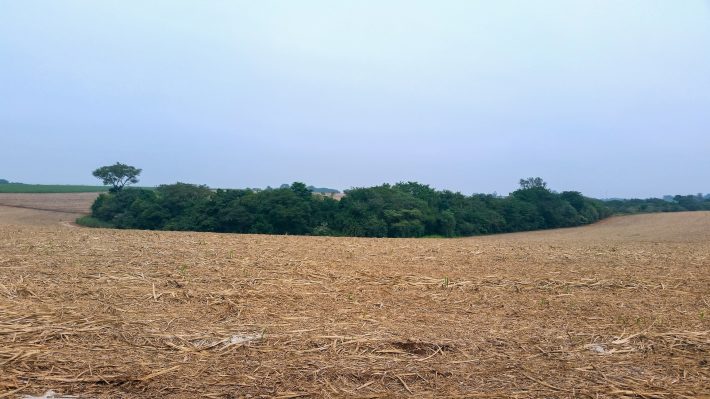Predicting forest areas with potential of natural regeneration
Federal University of São Carlos press release
Researchers from the Federal University of São Carlos and international colleagues have demonstrated how to predict and invest in restoring Brazilian forest areas with the potential of natural regeneration. Their findings were published today in the Journal of Applied Ecology.

The Piracicaba River watershed supplies drinking water for almost 10 million people, including much of the city of São Paulo, and lies within the second most threatened region within the Atlantic forest biome, with only 7% of forest cover remaining.
The costs of restoring forests vary widely for two main reasons:
- local biophysical factors strongly influence tree establishment and restoration success
- the economic losses of converting agricultural land to forest land depend on the economic value of crops planted and land prices (opportunity costs).
These costs can be significantly reduced by enabling natural regeneration, the natural process of forest regrowth following large-scale disturbances and replacement of forest with agricultural land uses. Because natural regeneration requires conditions that are not universally present, the research team used satellite imagery to identify locations where forests regrew naturally between 2000 and 2010 within the entire watershed and used this information, along with environmental and social indicators, to predict the probability of natural regeneration over the next ten years. They also calculated the costs of implementing restoration measures, based on these predicted probabilities, as well as land opportunity costs, which vary according to existing and prior land use, landscape features, and market contexts.
Three alternative scenarios were then applied to restore native forest cover over 15,000 ha within three independent 40,000 ha landscape units that represent a gradient of land use intensity and forest cover
- mechanized agriculture landscape dominated by sugarcane plantations
- pasture landscape predominantly covered by pastures
- forest landscape dominated by pastureland but with a higher forest cover (31.0 %).
An initial scenario prioritized restoration along rivers, according to Brazilian legal mandates. A second scenario applied restoration in random spatial locations, and a third scenario prioritized low-cost restoration in areas with high probability of natural regeneration.
For both crop and pasture land uses across the entire basin, natural regeneration was favored in areas with slopes above 10%, within 200 m of a water body, and within 100 m from a forest remnant. In the more forested landscape, 44.5% of the land had high potential for natural regeneration, compared to only 7.3% in the mechanized landscape unit.
The cost reduction strategy of restoration, based on prioritizing lower implementation cost through natural regeneration and prioritizing land uses with lower opportunity cost, resulted in enormous savings in implementation costs and total costs in all three units. When total costs were included, the magnitude of the cost savings was greatest in the mechanized agriculture unit, savings were 20.9 % lower (US$ 20.5 million), in comparison to prioritization based on riparian zones. Even in more forested areas, high opportunity costs can offset the low implementation costs of restoration.
The study clearly showed that prioritizing natural regeneration increased the cost-effectiveness of carbon storage and landscape connectivity at the landscape scale. The cost-reduction scenario minimized the total cost of aboveground carbon storage in all three landscape units, averaging US$74 per additional ton of carbon stored in restored forests within mechanized agriculture landscapes, US$58 in pasture and US$41 in forest landscape units. This analysis is one of the first to actually calculate the cost of carbon storage through forest restoration, demonstrating that these costs are far greater than the current price for carbon on the voluntary market.
“Our approach has the potential to improve public policies such as the current implementation of Brazil’s New Forest Code, specifically the Environmental Regularization Program that regulates where and how land owners need to restore and reforest degraded land”, said lead author Professor Paulo Guilherme Molin from the Federal University of São Carlos.
The research team, that also includes Pedro Brancalion and Silvio Ferraz from the University of São Paulo and Robin Chazdon from University of Connecticut, the University of the Sunshine Coast, and the World Resources Institute, commented that “scenarios for modeling the costs and benefits of restoration provide insights into ways to plan cost-effective landscape-scale restoration implementation. This study provides restoration scenarios that aim to increase native forest cover, improve conditions for wildlife, and store carbon in forest vegetation. With similar data collection, this approach can be used in other areas to map priority areas for low-cost restoration that leverage the potential for forests to restore themselves.”
According to Prof. Silvio Ferraz: “The basins in the southeastern region of Brazil urgently need more forest cover to improve the quality and regulation of water in their streams. Using its own regeneration potential, it is possible to achieve this increase more quickly and at a lower cost, which is fundamental to its viability.”
The study was funded by the Brazilian Coordination for the Improvement of Higher Education Personnel (CAPES), the Sciences Without Borders program and the São Paulo Research Foundation (FAPESP).
Read the full article (freely available for a limited time):
Molin PG, Chazdon R, de Barros Ferraz SF, Brancalion PHS. A landscape approach for cost-effective large-scale forest restoration. J Appl Ecol. 2018;00:1–12. DOI: 10.1111/1365-2664.13263
Media contact:
Fabricio J. Mazocco, Science writer, University of São Carlos, Tel: +55 16 3351 8119, Email: fmazocco@ufscar.br
Like what we stand for?
Support our mission and help develop the next generation of ecologists by donating to the British Ecological Society.